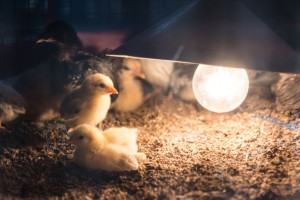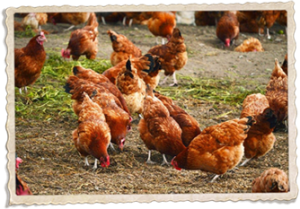In their first few weeks of life, baby chicks are unable to control their own body temperature. When they’re raised by hens, then their mothers will work to keep them warm. For backyard flocks, however, chicks are often kept in a brooder which needs to be properly heated by an infra-red heat lamp.
The temperature in the brooder should be set depending on the chicks ages, with the temperature dropping by 5 degrees each week as follows:
Note – the chart below is for home hatched chicks. Mailed chicks will need higher temperatures in the first few days, so please follow the guidelines provided by the hatchery.
- Week 1: 98 degrees Fahrenheit
- Week 2: 90 – 95 degrees
- Week 3: 85 – 90 degrees
- Week 4: 80 – 85 degrees
- Week 5: 75 – 80 degrees
- Week 6: 70 – 75 degrees
- Week 7: 70 degrees
By week 6 or 7, chicks should be able to regulate their own temperature, and if the outside air is around 70 degrees, then you can remove the heat lamp. The time between now and when you transition your chicks to the coop should be treated as a chance to gradually adjust your chicks to cooler temperatures. After all, once you transition chicks to the coop, they will likely have to deal with colder temperatures. This transition will be made easier if you gradually introduce cooler temperatures while they’re still in the brooder.
How to tell if the temperature is correct
While the above guide will work for most chicks, you should pay attention to how your chicks behave to know for sure if you’ve set the brooder at the right temperature. If the chicks are equally spread out amongst the brooder, then you have it at the right temperature. However, if they’re sitting along the perimeter of the brooder, then it’s likely too warm. Conversely, if they’re clumped close to the heat lamp, then it’s too cold.
To learn more about how to care for your new baby chicks, read through our blog or contact Chickens for Backyards today.

